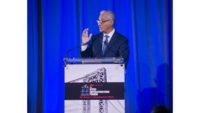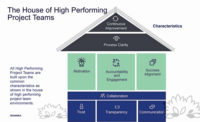To attract more underrepresented students to engineering fields and help fill a projected shortage of more than 50,000 practitioners in the state over the next five years, Texas A&M University has extended its link with community colleges to educate 25,000 engineers by 2025, which administrators said is within reach.
South Texas College in McAllen, Texas, and Tyler Junior College in Tyler, Texas, recently became the eighth and nine community colleges to join the Texas A&M Engineer Academy, begun more than a decade ago.
Ed Bassett, Texas A&M academy director, termed it a "first of its kind" program in the state. The school estimates Texas will be short 51,000 engineers by 2028.
The university offers 22 engineering majors, including civil engineering and architectural engineering. Bassett said civil engineering at the school is one of its five most studied majors.
He explained that the academy continues to have three primary objectives: access, affordability, and graduation. About 33% of those enrolled are first-generation college students who are more likely to come from low-income or minority backgrounds. More than half its students are Latino, 6% are Black and 20% are women.
“Civil engineers shape and build the environment and all the infrastructure that ultimately impacts our lives," Dayna L. Martínez, director of research and innovation at the Society of Hispanic Professional Engineers, told ENR. "We need civil engineers who understand the needs and challenges faced by all types of communities." According to Texas A&M, about 18 percent of its first-generation college students studies civil engineering.
Nationwide, about 17% of civil engineers are women and 12% identify as Hispanic/Latino, according to the group's statistics. For engineering as a whole, those numbers are 15% who are women and 9% who are Hispanic identifying. According to Texas A&M, 18 percent of Hispanic students
Often finances are a barrier for hopeful college students. Bassett says academy students save more than $40,000 in tuition and fees over four years by attending two years of community colleges.
More than 80% of such students graduate on time with an average GPA of 3.2. “Our program offers access and affordability, which is opening doors to underserved and underrepresented students,” said Bassett.
Rebecca Owens, Tyler Junior College Dept. of Physical Science chair, says partnering with Texas A&M will help boost the college's local community, which had a per capita income of slightly more than $31,400 in 2021. "The students will return to the Tyler area and have an impact on this community," she says.






Post a comment to this article
Report Abusive Comment